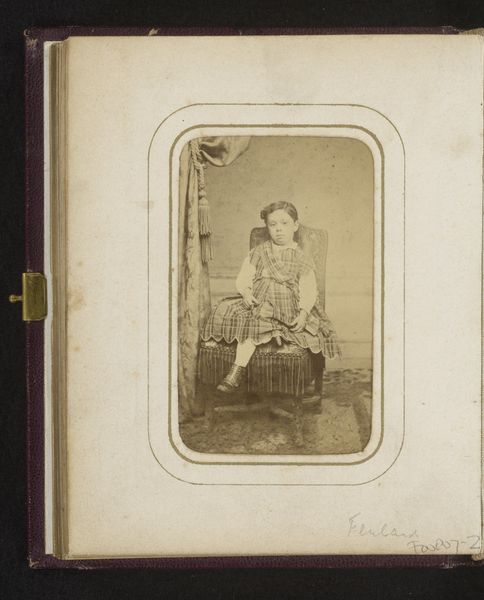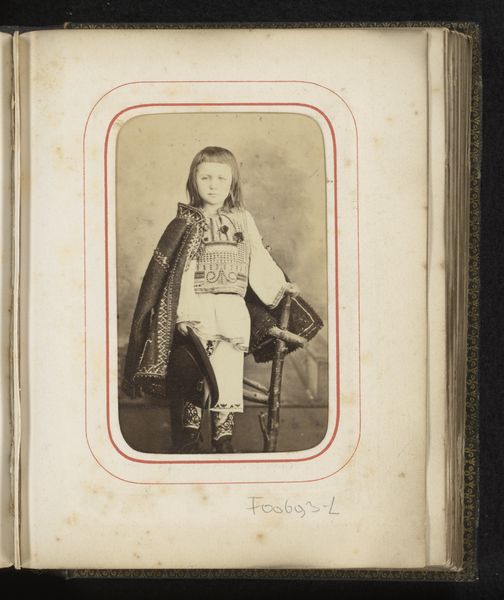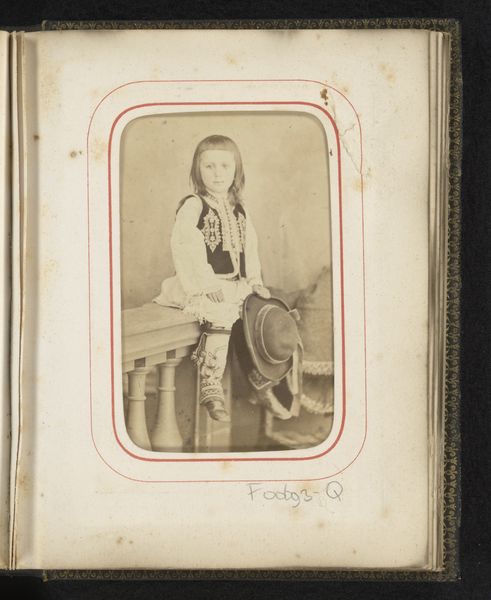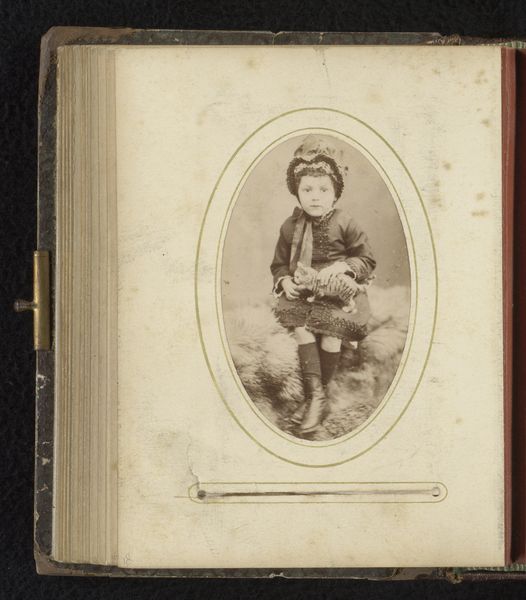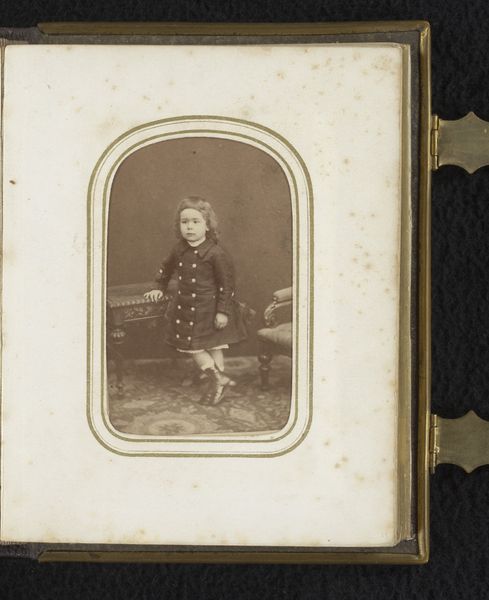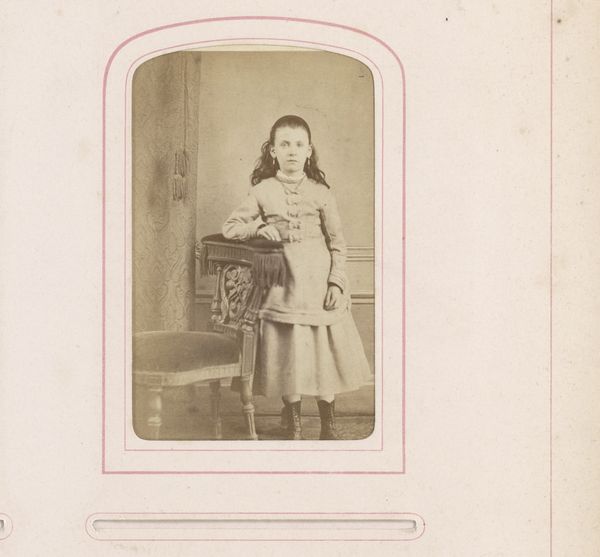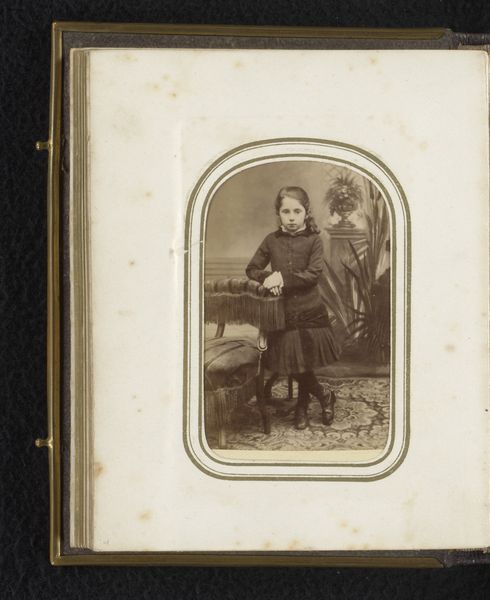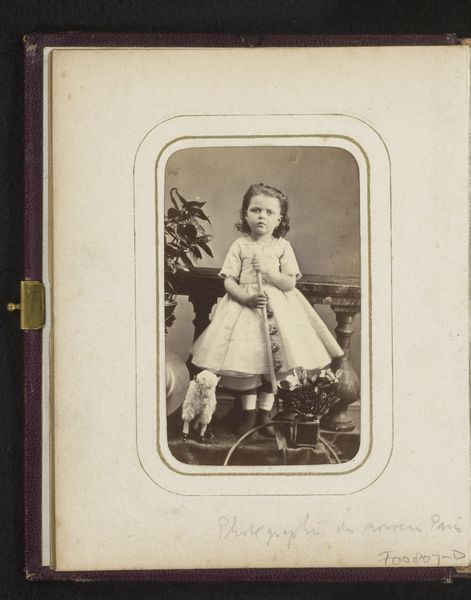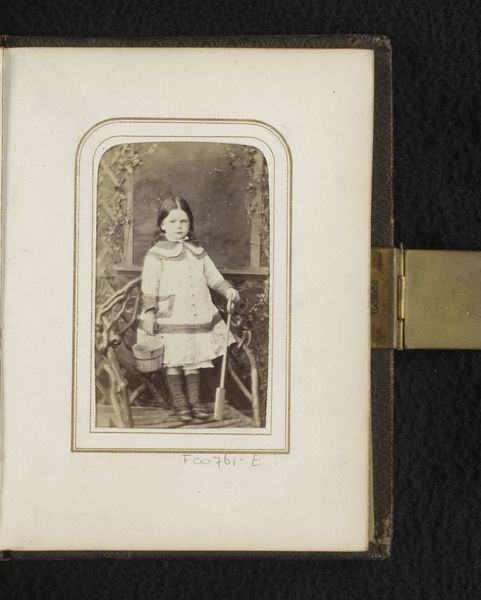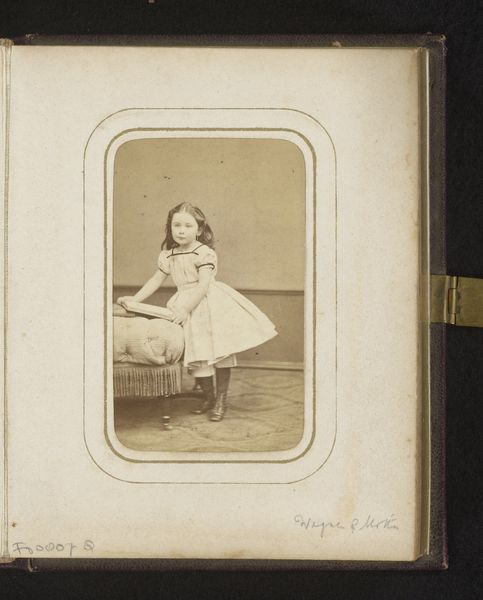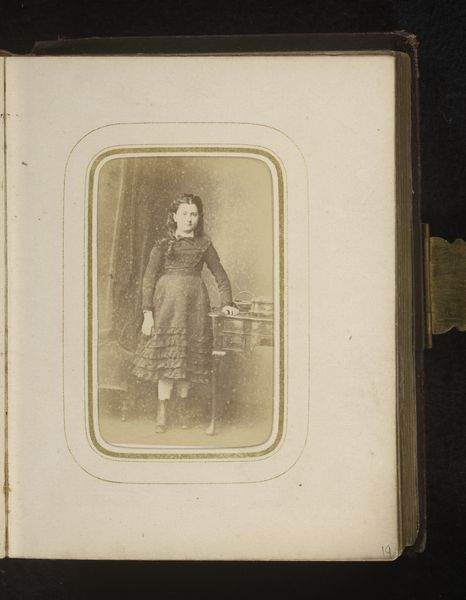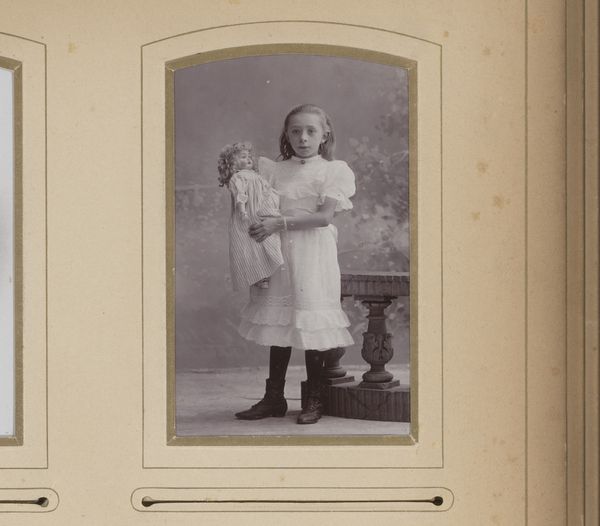
Portret van een man in Roemeense klederdracht met hoed in de hand 1870 - 1890
0:00
0:00
carolpoppdeszathmari
Rijksmuseum
Dimensions: height 85 mm, width 52 mm
Copyright: Rijks Museum: Open Domain
Curator: The artwork we're looking at is a photograph entitled "Portret van een man in Roemeense klederdracht met hoed in de hand" or "Portrait of a man in Romanian costume holding a hat" created sometime between 1870 and 1890 by Carol Popp de Szathmari. It’s held here at the Rijksmuseum. Editor: My first thought is the directness. It is striking! He is poised but with a gentle, melancholic look in his eyes. Almost theatrical with his traditional garments; a captivating gaze that really holds your attention. Curator: Szathmari was a pioneering figure, documenting a rapidly modernizing Romania. Genre painting through the medium of photography! This portrait captures more than just an individual. It freezes a particular historical moment and a social performance for a world audience. He presents the sitter in his finest traditional garments, suggesting both pride and perhaps also an awareness of a vanishing way of life. Editor: Indeed. The costume itself tells a story. The hat is held almost reverentially. His clothing contains strong symbols of status and identity. I notice the color white dominates, which speaks of purity and innocence. However, his dark eyes hint to some untold stories, they could have had great significance depending on what symbols these had during those times! Curator: And we have to remember the socio-political climate of Romania at that time. The drive toward nation-building, with rulers keen on establishing themselves as European royals. This photograph enters the play of political imagery through visuality. Editor: Perhaps, a strategic visual language used in political promotion. The photograph could offer a fabricated idea. Curator: Indeed. As a medium, photography offered an immediacy but also lent itself to manipulation. Its perceived “truthfulness” was carefully cultivated, often staging particular notions of the cultural heritage and a Romantic idea. Editor: Exactly. These portraits become artifacts of a manufactured memory. Thinking about the impact of the image and that Romantic flair, there is an implicit element of staging going on. Curator: Absolutely. That interplay between staged performance and raw representation, along with photography’s supposed 'realism', offers a fascinating glimpse into that period. Editor: Looking closer into these portraits, this journey unveils complex facets. A staged authenticity gives space to ponder society, culture, and perhaps our memory biases. Curator: Absolutely, and now perhaps visitors will engage with the piece in a fresh perspective.
Comments
No comments
Be the first to comment and join the conversation on the ultimate creative platform.
